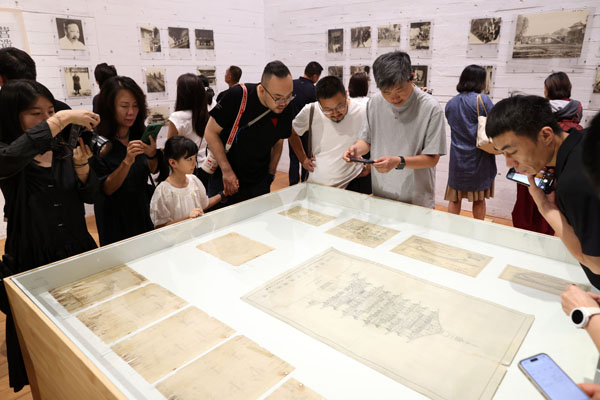

Full contribution made by Lin Huiyin highlighted in exhibition detailing the indelible mark she made on China, Hou Chenchen and Zhu Xingxin report in Taiyuan.
For young Lin Huiyin (1904-1955), it truly was a case of being in the right place at the wrong time. The 20-year-old had traveled all the way from China to Pennsylvania, United States, no mean feat in the early 1920s, to attend the US state's eponymous university.
Lin's designs were clear: to realize a long-held desire to study architecture. However, there was one big problem: She was a woman.
Despite her obvious, laudable ambitions, the university's architecture program under its school of fine arts summarily rejected her application on those very grounds.
However, its school of fine arts was a little more relaxed, and Lin would enroll there, completing all her courses over the years — including compulsory ones in architecture — with one notable exception. The university's regulations did not countenance women doing live figure drawing, on the grounds that it would expose them to the male body.
It would not be until 10 years later, in 1934, that more enlightened attitudes would prevail and women were able to take their rightful place in the architecture program, but of course for Lin it was too late.
Lin is widely known in China, not for her architectural talent, but as a prominent figure in novels and television dramas that depict her as a poet and as a romantic heroine.
In July, a century after Lin began her studies in Pennsylvania, her granddaughter, Yu Kui, arrived in Shanxi province, where her late grandmother did research, with a special document in hand: the architectural degree for which Lin had worked so assiduously, but which she had been denied. In May, recognizing this historic injustice, the University of Pennsylvania publicly and posthumously bestowed on Lin the degree she so richly deserved.
One reason Yu had brought the prized document was to deliver it to the Liang Sicheng and Lin Huiyin Academic Document Exhibition in Foguang Temple, which is located in Wutai county of Xinzhou city, and to the Changjiang Art Museum in Taiyuan city, both in Shanxi province. The temple played a key role in Lin's studies, as it was the subject of a wellknown architectural survey she undertook with her husband, Liang Sicheng (1901-1972). Also on display in both exhibitions is a manuscript of hers dated June 29, 1937, that details the work.